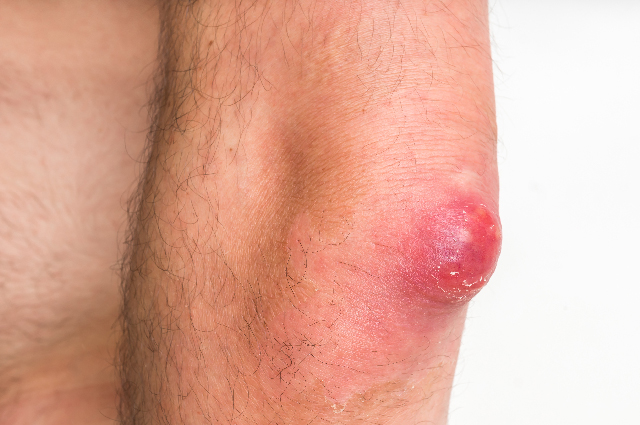Why you should learn therapeutic rocking to relieve stress, insomnia, or PTSD
06/15/2018 / By Zoey Sky

If you suffer from stress, anxiety, insomnia, pain, or post-traumatic stress disorder (PTSD), therapeutic rocking can help ease your symptoms.
This natural treatment is beneficial not only for the person being rocked but also for the person doing the rocking. Done properly, therapeutic rocking can be practiced daily to help relieve stress and anxiety.
Dr. Leslie Korn, a clinician specializing in integrative mental health, nutrition, and traumatic stress, considered the benefits of therapeutic rocking when she worked with children who had autism. The children – who were brought to her clinic in Mexico – required “a combination of nature adventure therapy and bodywork.”
Dr. Korn noted that to self-soothe, children in pain tend to rock themselves.
She followed up her work with the children in Mexico with a clinical internship on a psychogeriatric ward at the Lemuel Shattuck Hospital, a public health hospital in Boston. Dr. Korn was tasked with helping the hospital staff determine an alternative way of treating older and bed-ridden female patients with paranoid schizophrenia.
She offered to rock the patients instead of giving them a dose of benzodiazepines every afternoon. Dr. Korn then rocked the patients as they lay on their sides to help soothe their agitation and to help the patients relax. She noted that the rocking lulled some of the patients to sleep.
During Dr. Korn’s clinical fellowship at a Harvard teaching hospital, she tried therapeutic rocking on patients deemed suicidal and “borderline” suicidal, although the latter were actually trauma survivors. The nurses at the hospital recognized the benefits of this unique therapy.
Dr. Korn advised that unless they are also dually certified and licensed in bodywork and psychotherapy like her, mental health clinicians should teach the technique to their clients instead.
The benefits of therapeutic rocking
A universal behavior, rocking helps synchronize the brain. The act also accelerates and improves sleep quality. Rocking at all stages of life “engages the template of touch and the inner infant.” While we don’t grow out of the need for this kind of soothing behavior, we simply don’t receive or give it as adults.
Below are some of the many benefits of therapeutic rocking:
- It can help children and adults manage their anxiety, panic, and pain.
- It can help couples, partners, friends, and bodyworkers relieve stress or anxiety. (Bodyworkers refer to healthcare professionals who reintroduce touch when healing individuals and they include chiropractors, massage therapists, and physical therapists.)
- It can help rape survivors who have trouble falling asleep.
- It can help veterans calm down in the evening.
- It can improve sleep quality.
- It can increase sleep spindles, which are linked to the ability to sleep through environmental noise.
The benefits of therapeutic rocking operate on the same principle that is applied to babies who are rocked. The repetitive motion helps babies to relax and eventually fall asleep. (Related: Body Stress Release – A gentle therapy to relieve tension and pain.)
The basics of therapeutic rocking
Here are the basics of therapeutic rocking:
- Have the person receiving the treatment lie on their right side, if they are comfortable doing so. Take note that the right side activates the rest cycle of the right brain hemisphere. The right side will help induce sleep more quickly.
- Place a pillow under the person’s neck. The person being rocked can hug a pillow at their stomach if they feel comfortable doing this instead.
- The person giving the treatment should sit behind the “receiver.” The “giver” will then take their left palm, and with fingers pointed upward or toward the sky, place it directly over the sacrum. The left palm should cover the sacrum, so the outer edge of the little finger is just above the intergluteal cleft before the buttocks. The hand does not have to make contact with the buttocks. Meanwhile, the thumb will be near around the sacroiliac line.
- The giver’s right hand should be placed right on the neck on the cervical vertebrae. The hand will cup naturally cup around the neck. The quality of touch required for this therapy is very light. There’s no pressure needed from the giver.
- The giver can now very gently begin rocking the sacrum by pushing with the left palm. Minimal movement is required for the rocking therapy to work. The giver can adjust their movement based on the comfort level of their partner.
- The rocking can be done for about 10 minutes. The person doing the rocking can give gentle suggestions for breathing. The giver can also close their eyes and continue rocking the other person for at least 20 minutes until their partner falls asleep or feels relaxed enough.
If you or someone you know feels anxious or stressed, try to follow the basics of therapeutic rocking to help them relax.
Read more articles about therapeutic rocking and how it can ease stress or PTSD at Healing.news.
Sources include:
Tagged Under: agitation, Anxiety, autism, body rocking, how to, insomnia, natural cures, natural healing, Naturopathy, pain, panic, post traumatic stress disorder, PTSD, relaxation, remedies, rocking, sleep, sleep quality, stress, therapeutic rocking, therapy




















